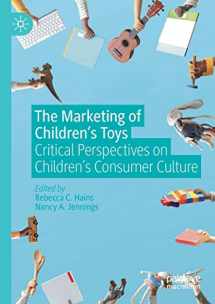
The Marketing of Children’s Toys: Critical Perspectives on Children’s Consumer Culture
Book details
Summary
Description
This book offers rich critical perspectives on the marketing of a variety of toys, brands, and product categories. Topics include marketing undertaken by specific children’s toy brands such as American Girl, Barbie, Disney, GoldieBlox, Fisher-Price, and LEGO, and marketing trends characterizing broader toy categories such as on-trend grotesque toys; toy firearms; minimalist toys; toyetics; toys meant to offer diverse representation; STEM toys; and unboxing videos. Toy marketing warrants a sustained scholarly critique because of toys’ cultural significance and their roles in children’s lives, as well as the industry’s economic importance. Discourses surrounding toys―including who certain toys are meant for and what various toys and brands can signify about their owners’ identities―have implications for our understandings of adults’ expectations of children and of broader societal norms into which children are being socialized.


We would LOVE it if you could help us and other readers by reviewing the book
Book review



